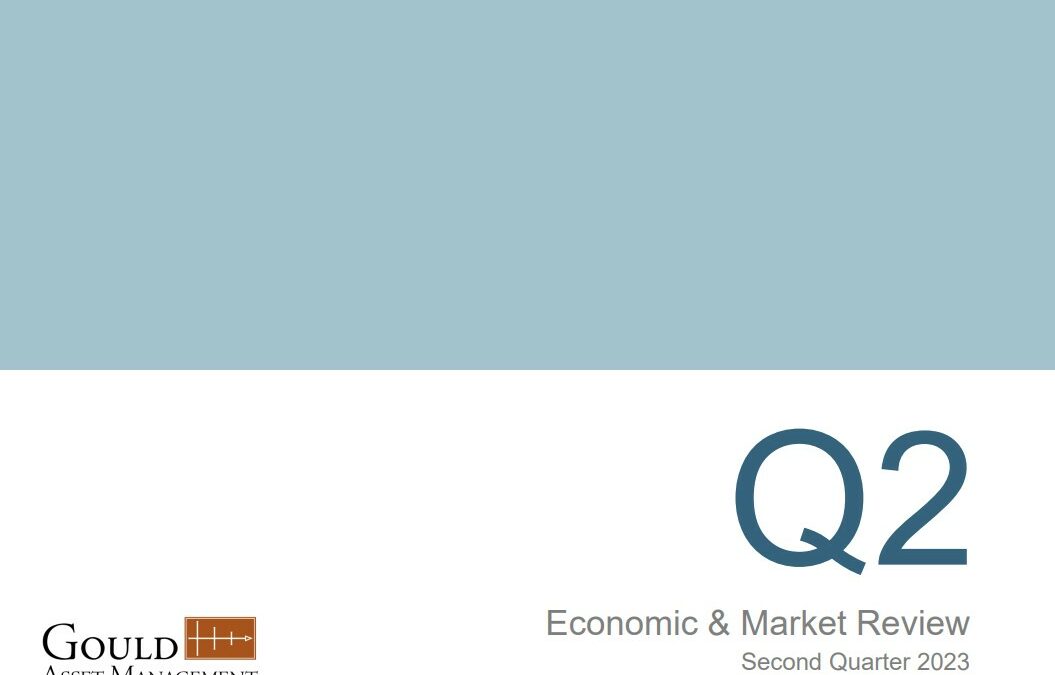by The Gould Asset Management Team
Note: This post is an excerpt from Gould Asset Management’s Economic and Market Review for the Second Quarter of 2023. The excerpt is posted here for the benefit of our blog subscribers.
Stocks Move Higher in Q2 Amid a Resilient Economy and a Red-Hot Tech Sector
Stocks climbed for the third straight quarter despite a variety of challenges, including high interest rates, ongoing geopolitical turmoil, high (but declining) inflation, a regional banking crisis, and a US debt ceiling showdown. Developed markets performed best, led by strong returns in the technology sector.
US large cap stocks, as measured by the S&P 500 stock index, rose 8.7% in the second quarter and are up 16.9% for the year-to-date through June. This puts the S&P 500 officially in bull market territory, up more than 20% from its October 2022 low. A small number of very large cap tech stocks led the charge, as investors cheered advances in artificial intelligence (AI).
Technology (up 15.4%) led all sectors for the second straight quarter and has risen 40.4% year-to-date. The consumer discretionary sector wasn’t far behind, rising 13.9% in Q2 and 32.3% year-to-date. These were the two worst performing sectors in 2022, illustrating how quickly market sentiment can change and why investors should be wary of chasing short-term performance.
Mid and small cap US stocks continued to lag large caps in 2023, with the Wilshire 4500 stock index returning 6.6% in Q2 and 12.8% year-to-date. Technology makes up a smaller component of mid and small cap stocks, which explains some underperformance. Higher borrowing costs and tighter lending standards are additional headwinds.
International developed and emerging market stocks also rose in Q2, but gains were more subdued, with the MSCI EAFE index rising 3.2% (up 12.1% year-to-date) and the MSCI Emerging Markets index gaining 1.0% (up 5.1% year-to-date). Most emerging market regions finished higher in the quarter, but overall performance was restrained by slowing momentum in China’s economic recovery.
Despite the US debt ceiling showdown in May, market volatility was subdued in the quarter, with the VIX volatility index dropping from about 18 to 13 at quarter-end, a level not seen since before the pandemic.
To continue reading, please see our entire Economic and Market Review.

